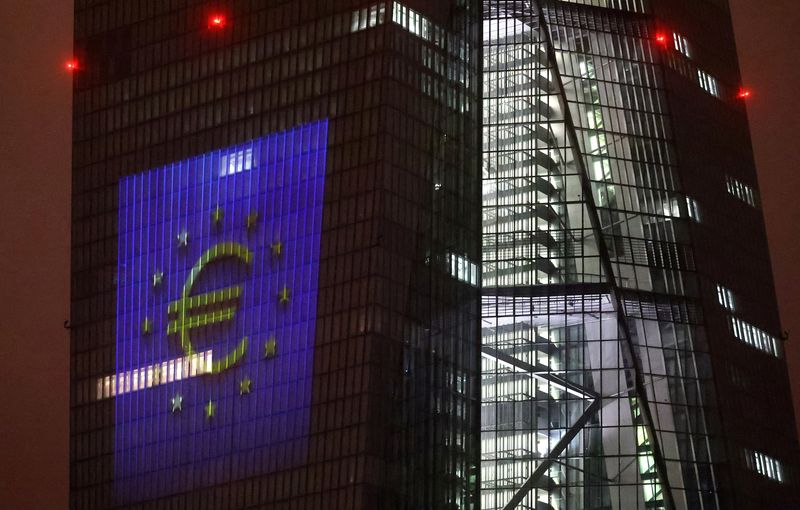Investing.com -- The Federal Reserve has paused rate hikes for now, but not for long, while China's central bank is heading in the opposite direction, cutting interest rates. The European Central Bank is up next, and is expected to continue tightening its monetary policy.
1. Fed signals more hikes ahead
The U.S. Federal Reserve announced a pause in its rate-hike cycle on Wednesday, as widely expected, the first such move since it started increasing interest rates to combat soaring inflation in March last year.
However, this decision doesn’t mean the central bank has ended its policy of increasing interest rates, as it increased its benchmark rate forecast to a peak rate of 5.6% at the midpoint in 2023, up from a prior forecast of 5.1% seen in March.
This suggests that two more hikes of 25 basis points remain in play, probably in the summer months, with Fed chair Jerome Powell calling the upcoming July meeting “live.”
“We didn’t make a decision about July,” Powell said after the Fed meeting. “Of course it came up in the meeting from time to time, but really the focus was on what to do today. I would say … two things: One, a decision hasn’t been made. Two, I do expect that it will be a live meeting.”
2. China’s central bank takes opposite stance
While the Fed was signaling more monetary tightening ahead, China’s central bank ramped up its monetary stimulus to help support a flagging economy.
The People’s Bank of China earlier Thursday lowered the rate on its one-year loans by 10 basis points to 2.65%, the first reduction since August, just a few days after cutting its seven-day reverse repo rate by 10 basis points to 1.90% from 2.00%.
Recent data has shown China's recovery is stalling as domestic and global demand falters, with data released earlier Thursday showing that industrial output grew 3.5% in May from a year earlier, slower than the 5.6% expansion in April.
Additionally, retail sales rose 12.7% in the same month, missing forecasts of 13.7% growth and slowing from April's 18.4%.
3. Futures edge lower; retail sales top data deluge
U.S. futures traded marginally lower Wednesday, as investors digested the Federal Reserve signaling the likelihood of more interest rate increases ahead even as it paused its hiking cycle.
At 05:05 ET (09:05 GMT), the Dow futures contract had dropped 40 points or 0.1%, S&P 500 futures fell 10 points or 0.3%, and Nasdaq 100 futures dropped 65 points or 0.5%.
Fed chair Jerome Powell indicated that future rate decisions would be made on a meeting-by-meeting basis, implying that the officials would be looking to the upcoming economic data to help guide the decisions.
There are a number of releases due Thursday which will be studied carefully, including May retail sales, both the NY Empire State and Philly Fed manufacturing indices for June and May industrial production.
Additionally, earnings are scheduled from the likes of grocery chain Kroger (NYSE:KR) and computer software company Adobe (NASDAQ:ADBE).
4. ECB to continue hiking cycle
The week of key central bank meetings continues, with the European Central Bank all but certain to raise borrowing costs to their highest level in 22 years later Thursday.
Inflation in the euro zone fell to an annual 6.1% in May, but this is still more than three times the ECB’s 2% target, and underlying price growth, which excludes volatile food and energy prices, is only starting to slow.
“Price pressures remain strong,” ECB President Christine Lagarde said earlier this month. “Our future decisions will ensure that the policy rates will be brought to levels sufficiently restrictive to achieve a timely return of inflation to our 2% medium-term target and will be kept at those levels for as long as necessary.”
Aside from today’s largely priced-in hike, the ECB is likely to leave the door open to more hikes, continuing to battle inflation even as growth in the region stagnates.
5. Oil prices edge higher, but sentiment remains weak
Crude prices stabilized Thursday, after the previous session’s selloff, helped by a Chinese rate cut to shore up the struggling economy of the world’s largest crude importer.
By 05:10 ET, U.S. crude futures were 0.3% higher at $68.47 a barrel, while the Brent contract edged up by 0.3% to $73.44 per barrel.
However, both benchmarks are on course for substantial losses this week, amid persistent concerns over slowing global crude demand and overheated supply.
The International Energy Agency stated in its latest monthly report, published Wednesday, that oil markets may tighten “significantly” over the next few months, but demand growth will taper off over the next few years as high prices and the Ukraine crisis help speed up the transition away from fossil fuels.
JPMorgan Chase has joined the deluge of banks cutting oil price forecasts for this year as it sees global supply growth offsetting a record rise in demand. It reduced its average Brent price forecast for 2023 to $81 per barrel from $90 earlier, and for West Texas Intermediate to $76 a barrel from $84.
